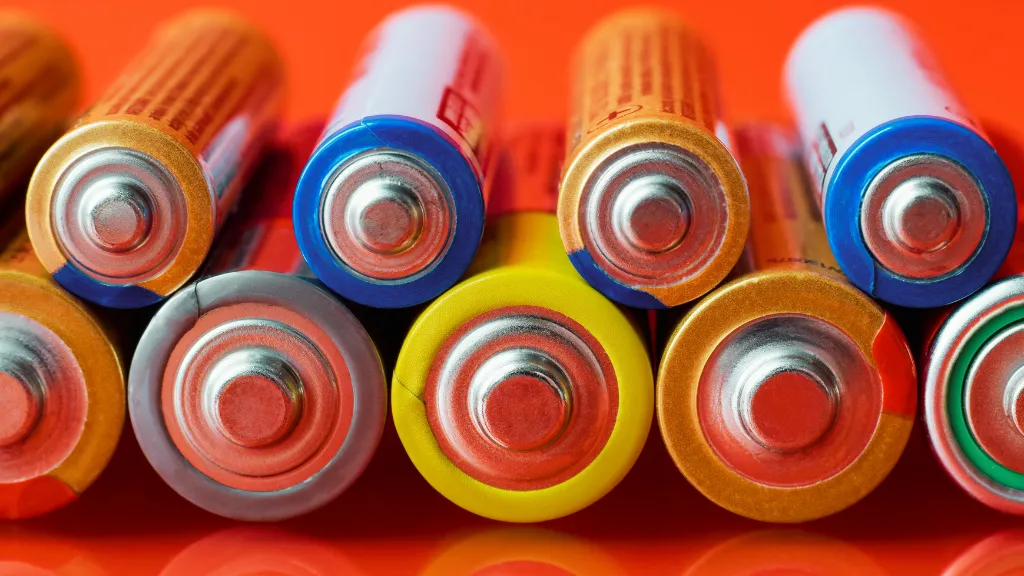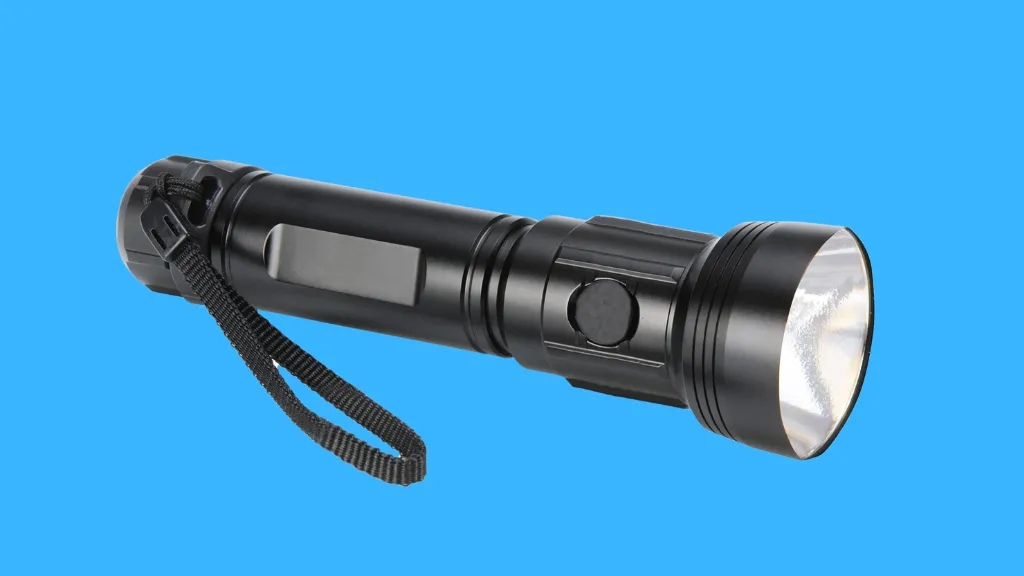Understanding AAA Batteries: Voltage Basics and More
As someone who’s always been fascinated by how everyday gadgets work, I find the world of batteries particularly intriguing. Today, I want to discuss one of the most common yet overlooked components in our daily tech life: the AAA battery.
These little powerhouses are everywhere, from our TV remote controls to wall clocks and even children’s toys.
In this article, I’ll dive into the technical specifications of these batteries, explore their common applications, and even touch on some tips for installing them correctly on your devices. Understanding these small yet significant components can greatly affect how we use and choose our everyday gadgets.
So, let’s start this electrifying journey into the world of AAA batteries!
Technical Specifications of AAA Batteries
- Nominal Voltage: The nominal voltage of a typical AAA battery is around 1.5 volts. This is like the standard amount of electrical force it delivers.
- Battery Capacity: Now, this varies a bit depending on the type. For alkaline AAA batteries, you’re looking at an average capacity of around 1200 milliampere-hours (mAh). That’s how much charge they can hold. Lithium AAA batteries, on the other hand, usually have a capacity of about 600 mAh.
- Operating Temperature: These little powerhouses are pretty tough. They can operate in temperatures ranging from 0°C to 60°C. That’s the freezing point for a pretty hot summer day!
- Size Matters: In terms of size, AAA batteries are quite compact. They typically have a diameter of about 14.5mm and a height of around 50.5mm. Easy to carry around and fit into a variety of devices.
- Chemistry Class: The chemistry of AAA batteries can vary. You’ve got alkaline, lithium, and even carbon zinc. Each type has its own perks and ideal uses.

Equivalent Models and Naming Conventions of AAA Batteries
When we talk about AAA batteries, it’s fascinating to realize they go by many different names, depending on the manufacturer and region. It’s like having multiple nicknames for the same person!
For instance, you might come across designations like LR03, R03, FR03, HR03, KR03, and ZR03. These sound like a bunch of random letters and numbers, right? But they all refer to the same type of battery – our good old AAA.
Now, you might wonder why there are so many different names. Well, it’s mostly about branding and regional standards. Each manufacturer might have their own naming system, but at the end of the day, they all serve the same purpose. It’s like how some people call a soft drink ‘soda,’ others ‘pop’ or ‘coke,’ depending on where they’re from.
In addition to these alphanumeric names, AAA batteries are referred to by codes like 24A, 24D, 24LF, MN2400, MX2400, and MV2400. It’s a bit like a secret code. But once you crack it, you realize they’re all different ways of saying ‘AAA battery.’
Knowing these equivalents is important, especially when traveling or buying batteries from a different country. You don’t want to end up with the wrong type because it was labeled differently. It’s like going to a restaurant and not recognizing your favorite dish because it has a different name on the menu.
Common Applications of AAA Batteries
- Digital Thermometers: We use those handy devices to check for a fever. Most of them run on AAA batteries because they’re small and fit easily into the compact design of the thermometer.
- Calculators: Remember those basic calculators we used in school or the ones on your office desk? AAA batteries power a lot of them. They’re reliable for long-term use, which is great because nobody wants their calculator dying in the middle of crunching numbers.
- Laser Pointers: If you’ve ever given a presentation, you might have used a laser pointer to highlight key points on your slides. Many of these pointers use AAA batteries because they’re lightweight and don’t add much bulk to the device.
- Flashlights: Small, handheld flashlights often use AAA batteries. They’re perfect for these because they don’t take up much space, allowing the flashlight to remain compact and easy to carry around.

- Security System Panels: Some home security systems have control panels that run on AAA batteries. It’s a reliable power source, especially for systems that must stay active 24/7.
- Electronic Toys: Many children’s toys, especially the smaller handheld ones, use AAA batteries. They’re safe, easy to replace, and make the toys portable.
- Smoke Detectors: This is a big one. Many smoke detectors use AAA batteries as a backup power source or their main one. It’s crucial for safety, so always keep those batteries checked and replaced regularly.
- Medical Devices and Instruments: Some small medical devices, like certain blood pressure monitors or glucose meters, rely on AAA batteries. They’re chosen for their reliability and compact size.
- Memory Backup: AAA batteries are used in some electronic devices to maintain memory backup. This way, your device can retain important information even when the main power source is off.
- Battery Pack Applications: AAA batteries are sometimes combined to form a battery pack for various electronic devices, providing a convenient and portable power source.
Installing AAA Batteries in Devices
First, you need to identify the positive and negative ends of the battery. This might sound basic, but getting it wrong can lead to many issues.
The flat side is usually the positive end on most alkaline AAA batteries. You’ll notice it’s marked with a plus (+) sign. The other side, where you often see a small protruding bump, is the negative end, marked with a minus (-) sign.
When you’re ready to put the battery into your device, it’s crucial to align these ends correctly with the corresponding markings inside the battery compartment. Most devices have clear + and – symbols to guide you. If you put the batteries in the wrong way, the device won’t work, and you could even damage it.
Here’s a tip: some devices have these tiny metallic tabs in the battery compartment. They’re there to ensure a good connection and to hold the batteries in place.
Be careful not to bend or damage these tabs. If they get bent out of shape, you can gently nudge them back into place with a small tool, like a screwdriver. But be gentle – you don’t want to break them.
Purchasing and Quality Considerations
- Where to Buy High-Quality AAA Batteries
First off, where you buy your batteries can make a big difference. I tend to avoid those no-name brands at dollar stores. Instead, I look for reputable retailers or electronics stores.
You know, places that specialize in electronics and batteries. They usually stock more reliable brands. I’ve also had good experiences buying online from well-known battery suppliers. They often have a wider selection, and you can sometimes find better deals.
- Avoiding Low-Quality or Counterfeit Batteries
Let’s talk about avoiding the bad stuff – low-quality or counterfeit batteries. I’ve learned this the hard way. Cheap batteries might save you a few bucks, but they can be a false economy.
They often don’t last as long; worse, they can leak and damage your devices. I always look for well-known brands like Duracell, Energizer, or Panasonic. And I’m cautious with deals that seem too good to be true – they often are.
- Checking Reviews and Recommendations
Another thing I do is check reviews and ask for recommendations. Online reviews can be a goldmine of information.
I look for comments about the battery life, reliability, and whether they hold up over time. Sometimes, I’ll ask friends or family what they use, especially if they’re into tech and gadgets. They usually know what works best.
- Considering Rechargeable Batteries
Lately, I’ve also been considering rechargeable AAA batteries. They’re a bit more expensive upfront but can be more cost-effective in the long run, especially for many devices I use. Plus, they’re better for the environment. I’m all for reducing waste where I can.
Testing AAA Batteries: Ensuring Optimal Performance
Testing AAA batteries is an essential step in ensuring they are providing the optimal performance for our devices. It’s like giving your car a regular check-up; you want to ensure everything is running smoothly.
Here’s how I go about testing these little power sources:
- Understanding Battery Charge Levels
First, it’s important to understand that a battery’s voltage can give us a good indication of its charge level. A fully charged alkaline battery typically shows a voltage of around 1.5 volts for AAA batteries.
- Using a Multimeter
The most reliable tool for testing batteries is a multimeter. It’s a handy device that measures electrical voltage, current, and resistance.
To test a AAA battery, I set the multimeter to measure voltage, touch the probes to the positive and negative ends of the battery, and read the voltage level. The battery is good to go if it’s close to or at 1.5 volts. If it’s significantly lower, it’s time to replace it.
- The Simple Drop Test
The drop test is also a quick and simple way to test a battery’s charge without a multimeter. Drop the battery (with a slight spin) from a couple of inches onto a flat surface.
If it gives a small bounce and falls over, it’s good. If it bounces around a lot, it’s likely dead or dying. It’s not as precise as a multimeter, but it’s a quick way to get an idea.
- Observing Battery Performance in Devices
Sometimes, I pop the battery into a device and see how it performs. If the device works as expected, the battery is probably fine. If the device is sluggish or doesn’t work, the battery might be low on juice.
- Considering Battery Age and Usage
It’s also good to remember the age of your batteries and how often they’ve been used. Even if they show a decent voltage, older batteries or those that have been heavily used might not perform as well as fresh ones.
- Safety First
Lastly, safety is key. I always handle batteries carefully, especially if they show signs of leakage or damage. It’s better to be safe than sorry when dealing with any battery.
Conclusion
Well, there you have it! We’ve journeyed through the world of AAA batteries, uncovering their secrets and understanding their vital role in our daily tech lives. It’s fascinating how something as small as a AAA battery can be so powerful and versatile, right?
From their technical specs like voltage and capacity to the various types available, we’ve seen that these batteries are more than just energy sources; they’re tiny powerhouses that keep our gadgets running smoothly. Whether in a remote control, a digital thermometer, or a child’s toy, AAA batteries prove their worth repeatedly.
And let’s not forget the installation part. Who knew something as simple as putting a battery in correctly could impact its performance? It’s a small detail, but it matters.

Author
Alex Klein is an electrical engineer with more than 15 years of expertise. He is the host of the Electro University YouTube channel, which has thousands of subscribers.
